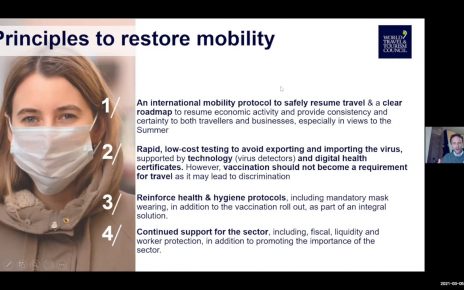Alton Aviation Consultancy says 2023 will be a pivotal year for Advanced Air Mobility (AAM), as the industry edges towards entry-into-service (EIS) and the start of commercialization.
Joshua Ng, director at global advisory firm Alton’s Singapore office, says: “With several leading eVTOL developers committed to EIS in 2025, this is the year in which the rubber must start meeting the road for the industry. Across a range of mission-critical factors, including funding, production ramp-up, and regulation, crucial milestones must be passed this year to keep the vision on track and determine the industry’s ultimate winners.”
According to Alton’s analysis, major AAM Original Equipment Manufacturers (OEMs) have to date raised more than $8b from investors and received 12,000 orders from customers around the globe.
Ng observes: “Despite fundraising successes to date, OEMs will need to raise further capital prior to and through EIS. Pre-delivery payments from customers will play an important role in the funding mix. In August 2022, United Airlines committed $10m in predelivery payments for 100 Archer eVTOL aircraft. This year, eyes will be on which OEMs can replicate that success with other customers.”
“This additional capital will be needed because OEMs are expecting to hit major vehicle certification milestones over the next 24 months. To scale manufacturing, they will need to enhance existing sites and develop advanced facilities to manufacture production-compliant aircraft, both to meet EIS targets and ramp-up production beyond first deliveries.”
Alton notes that OEMs’ EIS milestones also depend on regulators such as the US’s Federal Aviation Administration (FAA) and European Union Aviation Safety Agency (EASA) continuing to fast-track their own efforts. “Whilst regulators are defining blueprints for airspace integration, the full concept of operations between ground, air, and vehicle needs to be developed and rigorously tested before EIS,” says Ng.
Alton’s full analysis of the challenges facing the AAM industry this year are covered in ‘Advanced Air Mobility Entry-Into-Service: Key Industry Milestones Ahead.’
According to a separate Alton study of the AAM market, ‘eVTOL orders: 2022 wrapped’, 50% of aircraft orders to December 2022 were placed by commercial passenger operators, while 30% were made by business and general aviation operators. Alton’s analysis sees global eVTOL orders in the period equating to approximately 7% of the current commercial aviation and business and general aviation fleet. Alton’s analysis focuses on third-party aircraft orders, excluding operators which intend to operate their own fleets.
Alan Lim, engagement manager in Alton’s Singapore office and author of the 2022 market study, says: “Although some operators have committed to one type of eVTOL aircraft, operators such as Bristow Group have split orders between multiple OEMs. The decision to implement a diverse order strategy may be partly to lessen the operator’s risk exposure to a single OEM, and partly to favor different aircraft designs for different missions such as passenger transport, cargo, and medevac.”
Alton’s market study notes that North America, which accounts for around 55% of total eVTOL orders, is driving the growth of the AAM sector, with operators there ordering three times more air vehicles than in the next biggest region.
Ng concludes: “The eVTOL space continued its momentum in 2022. This year, we expect to see a continuation of the trends seen in the period, with new OEMs entering the market, existing OEMs intensifying their operator outreach activities, and more operators seriously considering eVTOL in their business strategies and willing to partner with manufacturers.”




